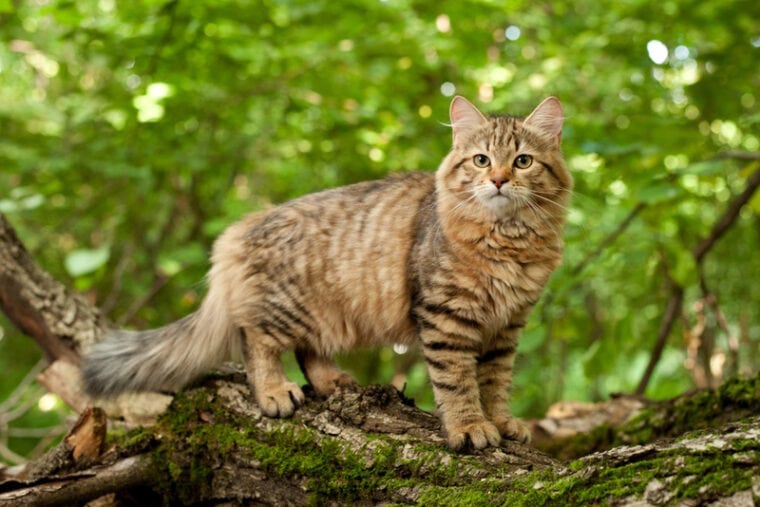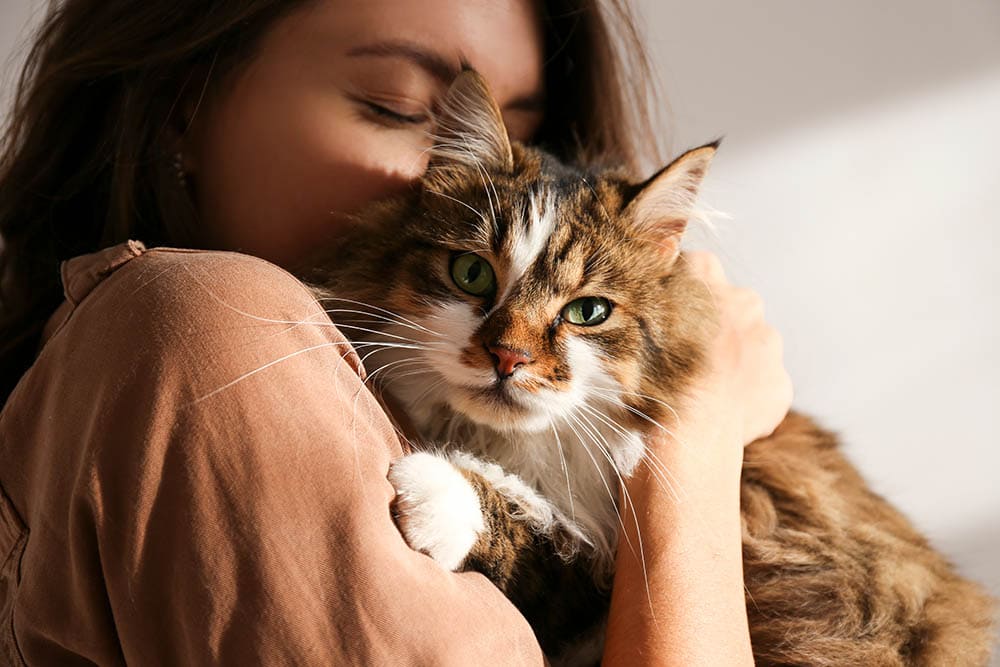
If you’re interested in the Siberian cat, we can’t blame you. This charming feline hails from Russia, touting a thick, lustrous coat and intriguing personality quirks. These gentle giants were bred for the outdoors, equipped with natural insulation and hardy bodily functions.
But just like any other cat, this particular breed has a few health concerns to mention. We have to say that since this breed is so notoriously healthy due to natural development, it has no health issues that are particular to the breed—except one. Although, it can suffer from common illnesses affecting many cats. Let’s explain!
The 6 Siberian Cat Health Problems
1. Heart Disease
There are two types of heart disease in cats—congenital and acquired. Congenital heart disease is something your cat is born with. Acquired heart disease is a product of the environment and lifestyle throughout the years.
Unfortunately, feline heart disease is among a Siberian cat’s most common problems—and is the only solid certainty linked to this breed. But we want to point out that this is not just a common issue with this particular breed but with all cats.
Specifically, Siberian cats have a type of heart disease called hypertrophic cardiomyopathy, which is caused by heart enlargement due to a gene abnormality. When the heart ventricles thicken, it causes the heart to work harder to pump blood through.
Early detection is the key to treatment for this ailment. It’s imperative that you know the issue exists before it grows into something much more problematic. Screening for abnormalities is a possibility but not consistently accurate.
Once your cat is diagnosed, there is no cure. However, with proper veterinary guidance and a detailed care plan, your cat can live a semi-normal life without dying prematurely. In severe cases, however, it can stunt the longevity of your Siberian.


2. Kidney Disease
Kidney disease is much less common in this breed, but still possible. Diagnosis or detection is tricky because it usually doesn’t develop into obvious symptoms until 75% of kidney function is gone. While your Siberian can get kidney disease earlier in life, it usually doesn’t occur until its senior years.
Many factors can play a role in kidney disease in cats. Some of the major accompanying illnesses are things like high blood pressure, cancer, chronic kidney stones, and genetic predispositions. It is also common among some long-haired breeds, presenting as a genetic disposition.
Once your cat turns seven, your vet will likely recommend senior screenings to test for elevations in the blood or changes in overall behavior or physicality. This happens just like their annual screening throughout their lifetime; it just covers more bases based on age than in previous years.
Even though vets typically start this testing at seven years, kidney disease doesn’t often develop until your cat is ten or older. In combination with the underlying cause, diet is a critical factor in managing the problem.
3. Dental Disease
Dental health is an aspect of cat care that is often overlooked. While some people might be very on-the-ball about daily brushings, many don’t even think cats need to brush their teeth. However, bad teeth and plaque buildup can lead to other issues over time.
Very progressed dental disease can cause significant health issues that can eventually affect more systems in the body than just the mouth.
Regular oral hygiene can prevent these issues, but sometimes your cat’s teeth (much like ours) decline with age. So, it’s vital to monitor senior cat mouth health.
Some studies have shown that wet cat food might be a culprit, too. Since it’s soft with no way to clean the teeth, the remnants lay on the gum line to cause buildup—which is worse on your cat’s teeth than dry kibble. So, it is especially important to brush your Siberian’s teeth especially frequently if they are on a strict wet cat food diet.

4. FLUTD (Feline Lower Urinary Tract Disease)
Feline Lower Urinary Tract Disease, or FLUTD, is a series of issues that can complicate the urinary tract function in cats. It can come from numerous sources, but all share the same general symptoms. If you aren’t paying attention to bathroom habits, these issues might be hard to detect.
Certain things can trigger FLUTD, including multi-cat households, environmental stress, and urinary stones. Signs and symptoms usually clear up on their own within two weeks. However, if there are frequent household stressors, your vet might recommend accommodating your cat accordingly.
If your cat is dehydrated, your vet may give them fluid therapy to get them back on par. Generally, these issues aren’t medically serious, though they can be quite painful and irritating for your poor kitty. Sometimes, antibiotics might be necessary to rid infections in the urinary tract, too.
In most cases, permanent changes within the environment will cure FLUTD.
5. Respiratory Disorders
Many respiratory issues stem from an infection, which is generally very contagious. All cats can be susceptible to respiratory infections—and many can occur when cats are grouped in large numbers, such as in shelters or kennels. Since some of these issues can vary, let’s explain each aspect in a little more detail.
Respiratory Infections
Respiratory infections are contagious and can significantly impact your cat’s overall livelihood. Generally, you can treat these issues with antibiotics or other medications prescribed by your vet. However, some can be trickier to treat.
Respiratory Deformities
Certain respiratory problems stem from genetic defects or damage. For instance, your cat could be born with narrowed nasal passages, develop tumors in the area, suffer from nasopharyngeal polyps or damage to the airway.
As you can see, since there can be many root causes of respiratory issues, treatment will greatly depend on the problem. With infections, usually, an antibiotic and general care can help. However, permanent environmental changes might be necessary for disorders that will never change, such as a deformity.

6. Hereditary Cancer
Hereditary disorders can be challenging, especially when that problem is a type of cancer. While good breeding with strictly monitored and vetted parents should eliminate the risk of cancer in your kitten, it’s still possible—especially in questionable breeding situations.
Regular vet care is imperative to get ahead of developing issues, especially as they begin advancing in years.
Keeping Your Siberian Cat Healthy

When you bring home your Siberian kitten, health will be one of the primary concerns. Kitties need to receive the proper veterinary care right off the bat. If you bought your Siberian cat from a breeder, you are likely not to have to worry about shots for a week or two.
However, it’s essential to get them to the vet of your choice so they can become acclimated with the process and receive any boosters or general examination as necessary. As your Siberian cat gets a little older, they will need to have their growth monitored, microchipping, and spay or neuter surgery.
After the first year of life, these visits slow to once a year. They should really only need an annual check-up as a part of routine care. However, if you suspect anything in between, you must get them to the vet, even if it’s not time, to get ahead of any developing issues that could be serious.
Final Thoughts
The likelihood of running into breed-related issues for your Siberian is low but still possible. After all, so many factors can trigger illness. The best prevention or treatment is early detection and regular vetting.
Since your Siberian is a very hardy breed, you will likely get a great report from your vet each time. But if something crops up, at least you’ll be ten steps ahead.
Featured Image Credit: Just Mila, Shutterstock








